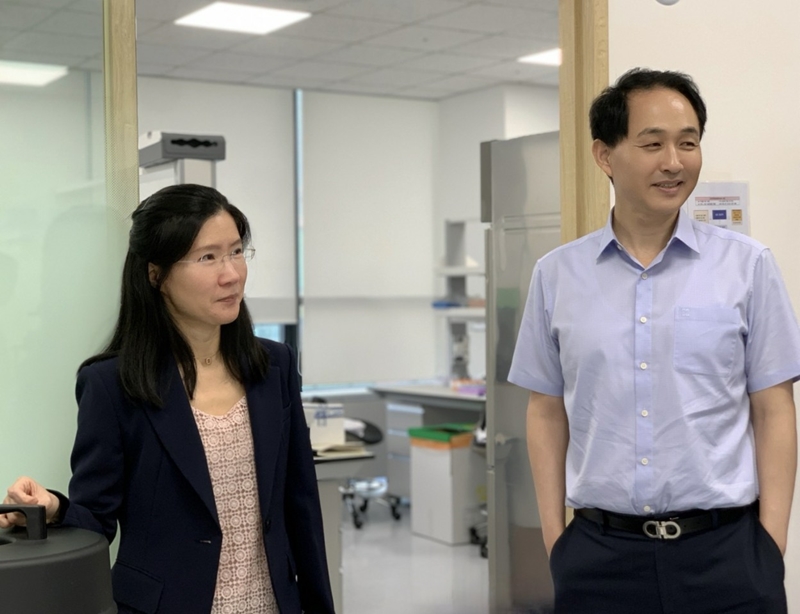
ArtBlood CEO Baek EunJung (left) and Director Bae KyungDong at a lab explain their company's BioBlood, or red blood cells made in-vitro with cells. (ArtBlood)
By Koh Hyunjeong
Why is blood red? Because red blood cells, which account for about 45% of human blood, are filled with iron-containing hemoglobin. Iron is important since it combines with oxygen in the lungs to deliver oxygen throughout the body, making such cells essential for life.
But patients who need blood transfusions still rely solely on blood donation. The problem is that the nation's number of donors is plummeting due to population decline and rapid aging.
ArtBlood is an innovative startup whose BioBlood, or red blood cells produced in vitro with stem cells, can be transfused immediately regardless of blood type. This breakthrough has helped the company attract KRW 10.5 billion in Series A investment.
Last year, ArtBlood was the exclusive winner of a contest to advance the mass production process of cell-based artificial red blood cells jointly organized by the Ministry of Trade, Industry and Energy; Ministry of Science and ICT; Ministry of Health and Welfare; Ministry of Food and Drug Safety; and Korea Disease Control and Prevention Agency. Its selection accentuated the company's high technology and vision.
Artificial blood based on hemoglobin, or hemoglobin-based oxygen carriers (HBOC), have been around for quite a while, but wide medical application remains elusive because HBOCs' stability in blood is extremely low, lasting only a few hours.
Another reason is artificial blood's reaction with oxygen monoxide has a vasorelaxation effect, which causes side effects like constriction of blood vessels that raises blood pressure. Due to these problems, artificial blood is limited in its ability to replace natural blood.
ArtBlood has focused on producing red blood cells that utilize hematopoietic stem cells (HSC), which make some 10 billion red blood cells per hour while inside bone marrow.
If red blood cells can be mass produced in vitro or at a lab or even a factory using HSCs, it would revolutionize blood supply. This is why ArtBlood CEO Baek EunJung, a medical professor and specialist in diagnostic hematology and transfusion medicine, sought to develop cell-based artificial blood.
The company's two source technologies are engineering to cause continuous division of HSCs and processing to constantly have engineered cells grow in a bioreactor, a device that artificially replicates the process of red blood cell production in the body.
When HSCs are cultured in vitro, they cannot continuously proliferate and immediately proceed to the differentiation process to produce a small amount of blood cells. ArtBlood's technology, however, enables mass production.
ArtBlood Director Bae Kyung Dong said, "A red blood cell is formed only in the final stage of production if its nucleus is removed, and HSCs engineered by ArtBlood have a high enucleation rate."
A red blood cell has a gap in the middle, resembling a doughnut with a closed hole.
The enucleation rate is directly related to that of the success of in-vitro red blood cell production, making it an important factor in determining production cost.
"We must expand the bioreactor scale to 100-200 L to move on to clinical trials," Bae said. "We're working on process development."
To secure GMP-grade cell lines by the second half of next year, ArtBlood is cooperating with contract manufacturing organizations in the U.S.
Cell lines refer to cell groups that can be cultivated continuously in vitro and GMP is a standard for manufacturing and quality control that guarantees efficacy, safety and stability.
Baek added, "Our BioBlood is a stem cell-based blood prototype with various functions depending on purpose."
hjkoh@korea.kr